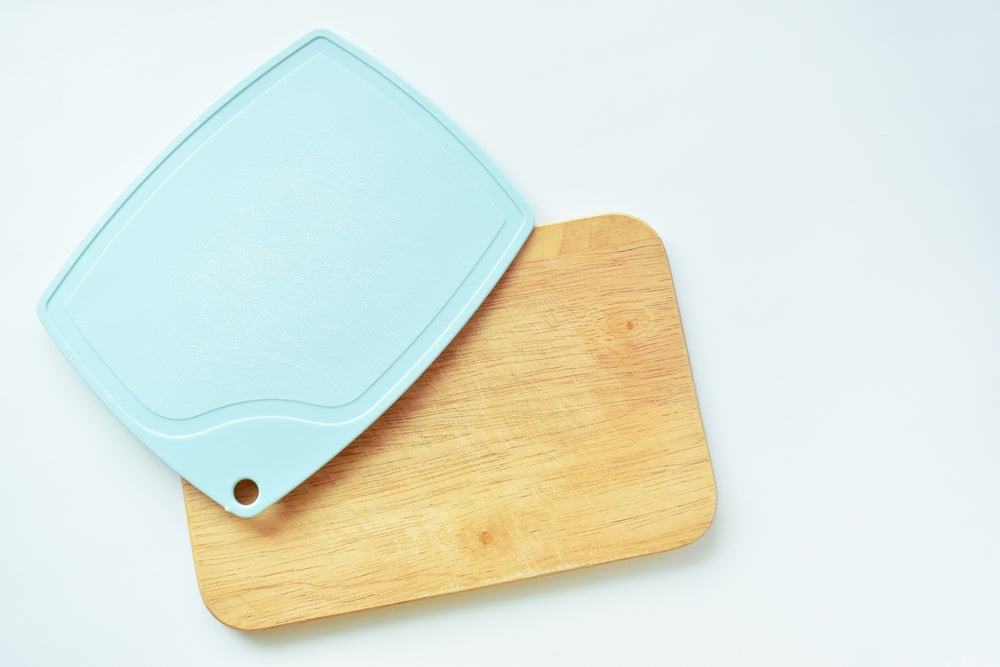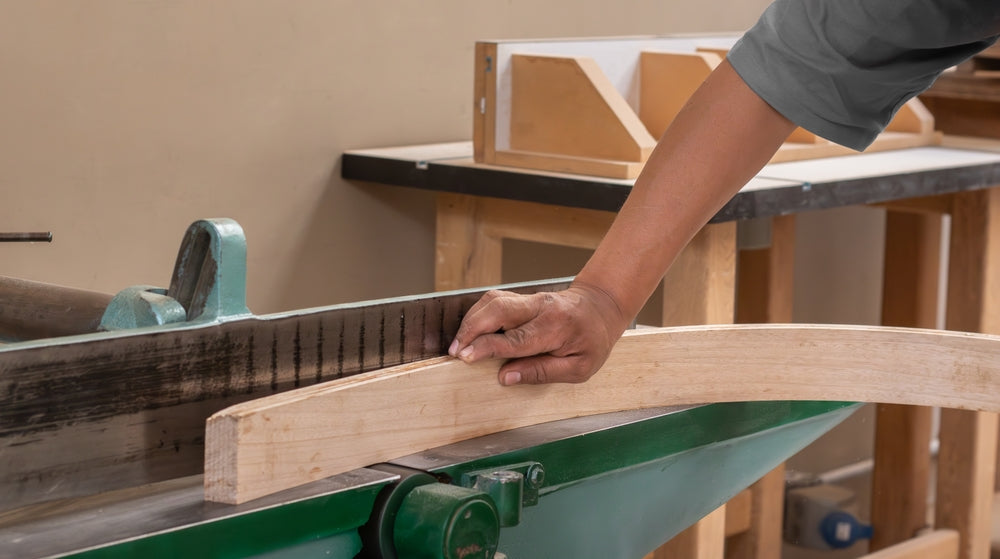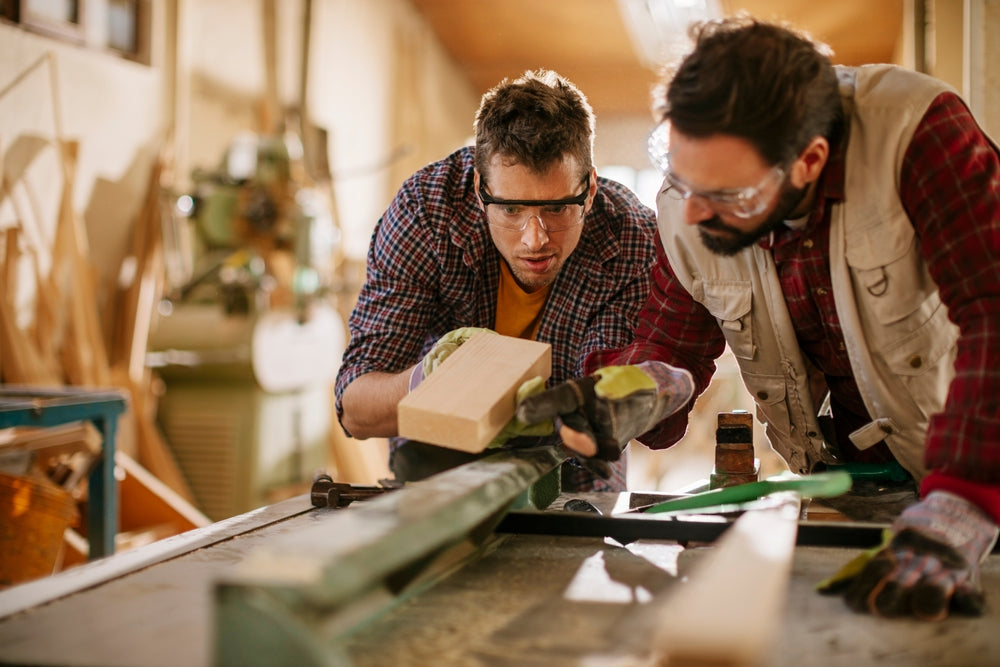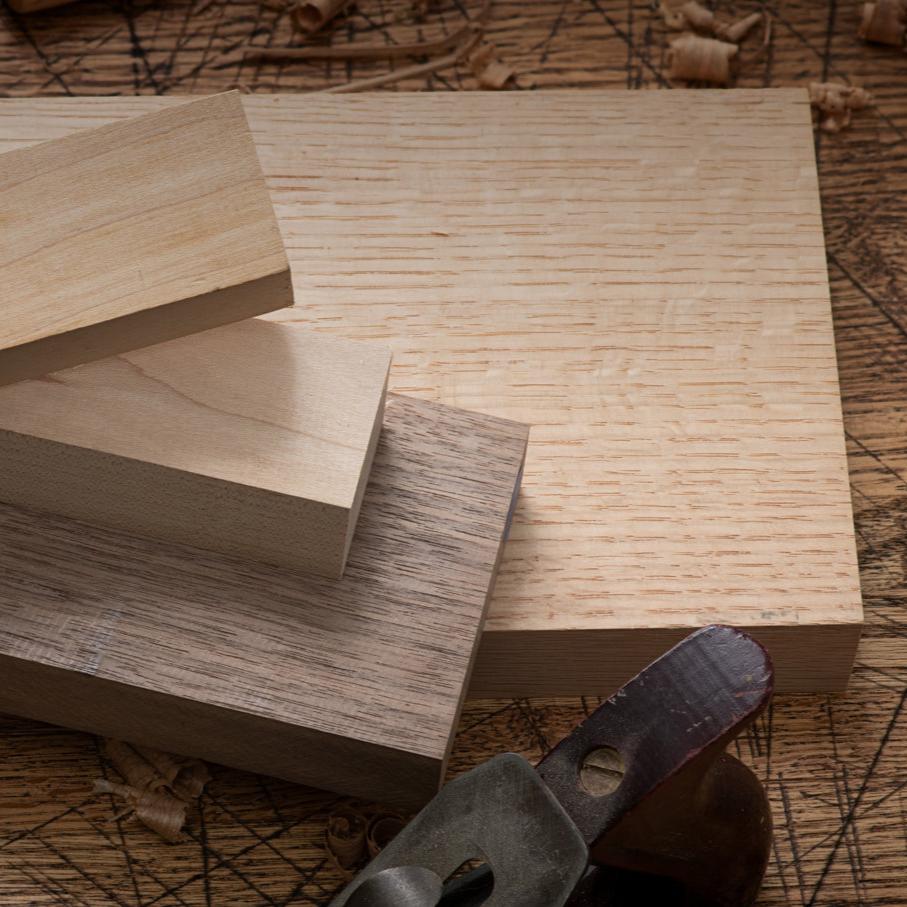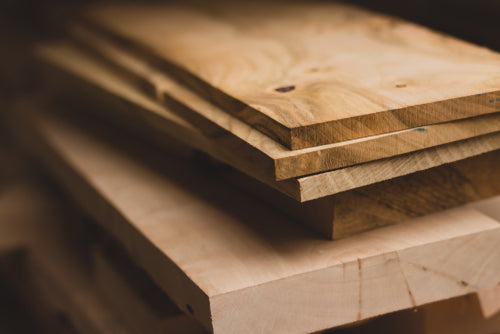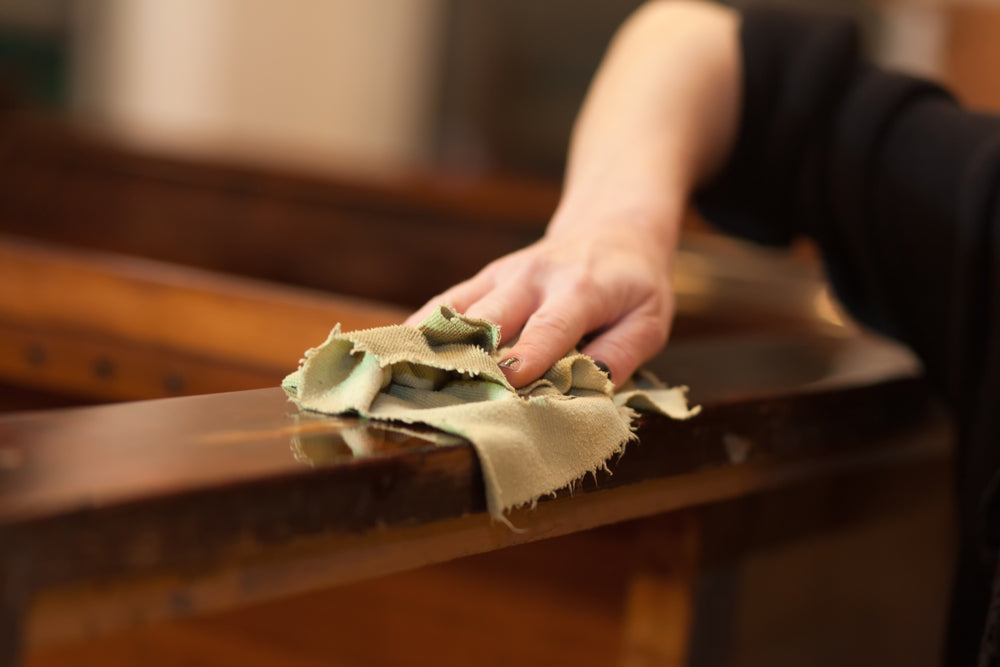One of the easiest ways to embrace eco-friendly living in your kitchen is to switch from plastic to wood cutting boards. Not only is wood durable, beautiful, and sustainable, but science indicates that it’s more sanitary than using plastic cutting boards!
Wood vs. Plastic Cutting Boards
True, wood cutting boards are more expensive than plastic ones. They also require more specialized care. If you toss your wood board in the dishwasher, you’re in for a mess! Plastic is cheap and easy. However, the old warning “you get what you pay for” is very applicable when comparing wood to plastic. Let’s look at some important differences between the two materials as cutting boards. We’ll also discuss which wood types work best.
Attractiveness
The variety of grain patterns and colors that occur naturally in hardwood means that every wood cutting board is unique. Talented woodworkers can mix different species of wood in lovely patterns.
Plastic cutting boards are available in a variety of colors, including some that are made to look like stone.

Durability and Longevity
If you’ve ever seen the knife gouges in a plastic cutting board, you may be tempted to believe that’s just how all cutting boards will end up. However, some kinds of wood can heal itself! End-grain boards are considered a more high-end product and tend to heal themselves the best. After use, wood has shown that its grain and fibers tend to close back up, not something you see with plastic.
A plastic cutting board will last 1-5 years. A good wooden cutting board can last decades when properly maintained. Anecdotally, some Reddit users mention 30-year-old wood boards that are still going strong.
While you should replace your plastic cutting board if it gets deep gouges, a wooden cutting board can be sanded down and refinished to extend its life!
Safety
Plastic cutting boards harbor bacteria. In fact, if you toss that plastic board into the sink and think “I’ll deal with it later”, the bacteria are multiplying on it rapidly. Now think about all the cuts on your board. Those are like the Mariana Trench of bacteria. Each gouge makes that board harder to clean, increasing the risk of bacteria living on your board and coming into contact with your food the next time you use it.
Wooden cutting boards are actually anti-bacterial. In fact, even when an abundance of bacteria was left on a wood cutting board for 12 hours in a humid environment, at least 98% of bacteria was gone. This doesn’t mean you don’t have to clean the boards, but it’s nice to know that the wood will take care of any bacteria I miss!
Bacteria aside, studies have also shown using plastic cutting boards can introduce microplastics into your food.
The Sustainable Choice
North Castle Hardwoods ensures that only mature wood is harvested by our trained foresters and loggers. Our sustainably managed forests are selectively harvested to produce the best quality wood, and to leave the forests in better shape after harvesting. This ensures healthy forests and a renewable resource that will be available for generations to come.
When a wood cutting board has outlived its usefulness, it can be composted. Unfortunately, plastic cutting boards will take hundreds to thousands of years to break down. Don’t forget that as plastic breaks down, it also releases microplastics which can eventually find their way into our water.
Wood Enhances Flavor and Protects Knives
Wood can actually give your food a subtle flavor, especially when new or newly seasoned! Some consumers love this aspect, especially for charcuterie boards. Different woods offer a different strength of flavor. As you use the board and continue to clean and oil it, this flavor can disappear.
Cheap plastic cutting boards may have a strange odor and that can translate into flavoring your food as well- and not in a good way. This can happen both with new boards, and boards that have not been properly cleaned.
Wood cutting boards are also gentler on your knives than plastic.
The key to a high-quality cutting board is to use the right wood. You want a nice hardwood, like maple, walnut, cherry, or beech. These woods are hard enough to stand up to frequent cuts and pressure, but not so hard that they will impact your knives. Cheaper wood boards made with materials like bamboo are much rougher on your knives than a quality hardwood.
Plastic will also wear down your knives. It’s nearly impossible to find a plastic board that is hard enough to stand up to being cut on, but yielding enough to keep your knives sharp.
Explore Our Premium Wood Cutting Boards and Kits Today!
If you’re interested in creating your own gorgeous cutting board, we have several pre-cut cutting board kits that will create a beautiful board, no matter your woodworking skill level! You can also purchase a premade cutting board and pretend you made it. Don’t tell my mom I didn’t really make that stunning board she admires every time she comes to visit.
Conclusion
From safety to durability, a high-quality wood cutting board is worth the investment. Not only does it add a beautiful aesthetic to your kitchen, but it’s a piece that will be with you for years to come.
Visit North Castle Hardwoods today and treat yourself to a quality cutting board. Be sure to take a look at the Cherry cutting board “Fuji”. It’s my personal favorite, and I’m sure you will love it as much as I do.
